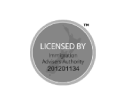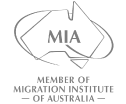For skilled professionals targeting Australia’s points-based immigration system, achieving Superior English (20 points) significantly bolsters visa prospects. In 2025, the Department of Home Affairs accepts IELTS, PTE Academic, and TOEFL iBT for permanent residency applications, each with distinct scoring structures and formats. This analysis dissects the optimal path to Superior English based on test design, scoring transparency, and candidate feedback.
Test Structures and Superior-Level Requirements
PTE Academic
- Format: Fully computer-based with AI scoring in Speaking, eliminating human bias[5]. Results typically delivered within 48 hours[3].
- Superior Requirement: 79+ overall (equivalent to IELTS 8.0)[2][3].
- Scoring Advantage: Integrated tasks (e.g., reading while speaking) allow skills to compensate across sections[1][5].
IELTS
- Format: Choice of paper-based or computer-delivered; human-examiner speaking assessment[1][3].
- Superior Requirement: 8.0+ in each band[3].
- Scoring Challenge: Band descriptors require uniform excellence across all sections, with no compensatory scoring[2][3].
TOEFL iBT
- Format: Measures Listening, Reading, Writing, Speaking at test centers (online versions invalid)[1][3].
- Superior Requirement: 94+ overall with strict sectional minimums[1][3].
- Complexity: Academic-focused content disadvantages non-academic professionals[1][4].
Scoring Comparison for Australian Immigration
| English Level | PTE Academic | IELTS | TOEFL iBT | Points Awarded |
|---|---|---|---|---|
| Superior | 79-90 | 8-9 | 94+ | 20 |
| Proficient | 65-78 | 7-7.5 | 84 | 10 |
| Competent | 50-64 | 6-6.5 | 64 | 0 (minimum) |
Test Difficulty Analysis
- PTE: Computer-adaptive questions adjust difficulty based on performance. The AI-scored speaking section avoids human subjectivity, benefiting candidates with accents[5][2]. Integrated tasks (e.g., summarizing spoken text while writing) enable high scorers to leverage multitasking strengths[1][5].
- IELTS: Human-examiner speaking tests favor strong conversationalists but introduce scoring variability[2][3]. Achieving uniform 8.0+ bands is statistically harder than PTE’s single composite score[3][5].
- TOEFL iBT: Academic vocabulary-heavy format (e.g., lecture summarization) challenges non-native speakers. Sectional minimums complicate Superior achievement[1][4].
Strategic Recommendations
- For Fast Results & AI-Friendly Formats: Choose PTE Academic if you perform well in timed, integrated tasks. The 79+ composite target is achievable without perfect sectional balance[5][1].
- For Human Interaction Preference: IELTS suits candidates confident in face-to-face speaking but requires meticulous preparation for uniform band 8.0[3][2].
- Avoid TOEFL for Point Optimization: Its academic focus, sectional constraints, and 94+ target make Superior English points less attainable than PTE or IELTS[1][4].
Cost and Accessibility
- PTE: AUD 375, frequent test dates[2][3].
- IELTS: AUD 395 (paper) / AUD 410 (computer)[2][3].
- TOEFL: Comparable pricing but limited immigration utility for Australia[1][4].
Conclusion
PTE Academic emerges as the most efficient path to Superior English points in 2025 due to its compensatory scoring, rapid results, and AI-driven objectivity. IELTS remains viable for exceptionally balanced candidates, while TOEFL’s structure hinders point maximization. Skilled migrants should simulate practice tests to identify personal strengths before committing to a test.










